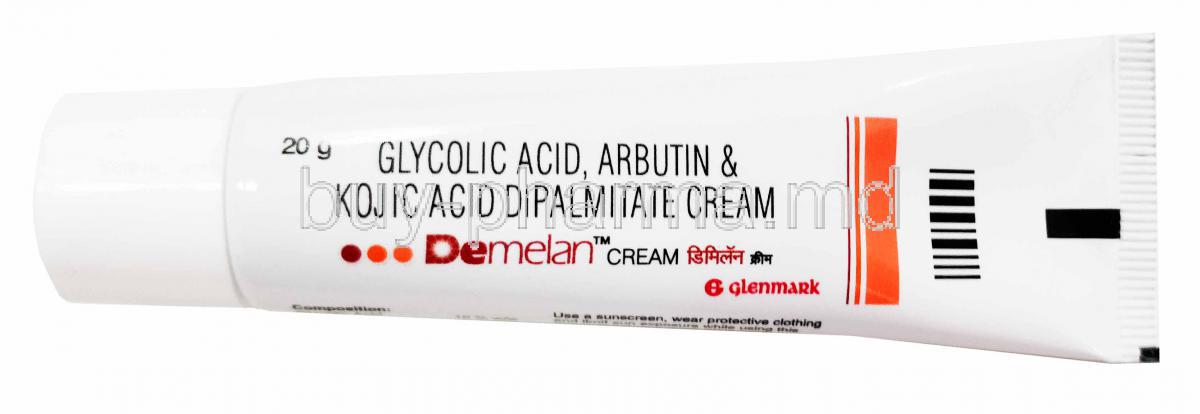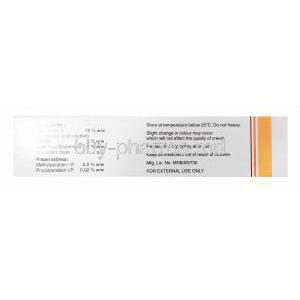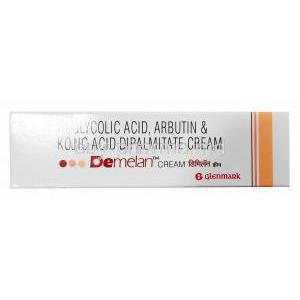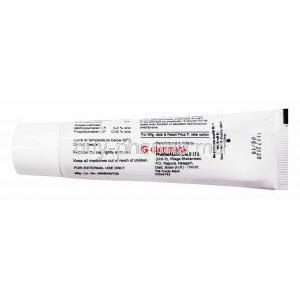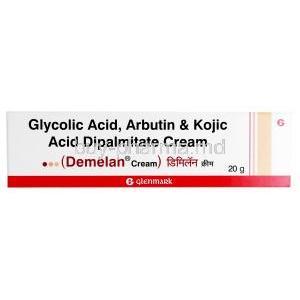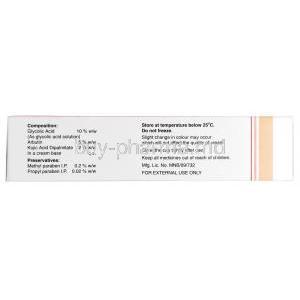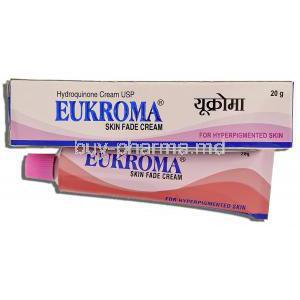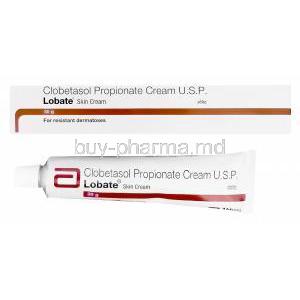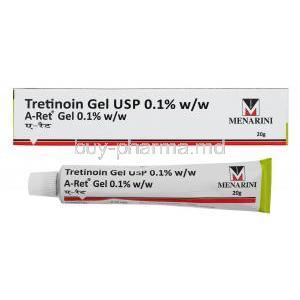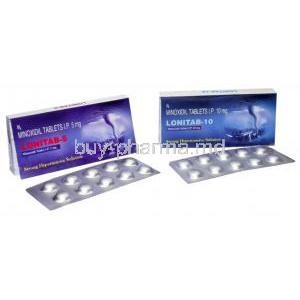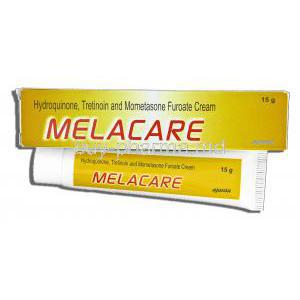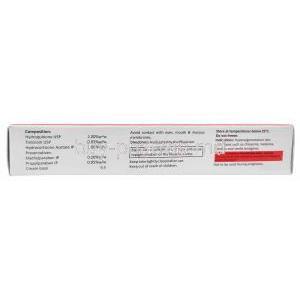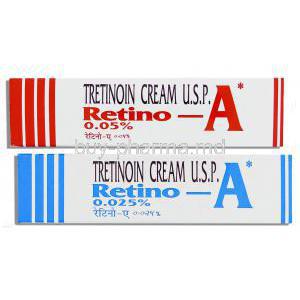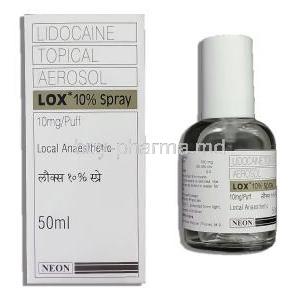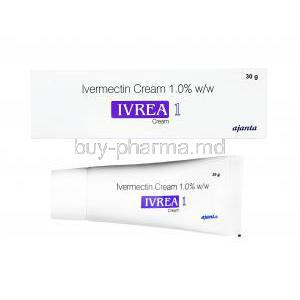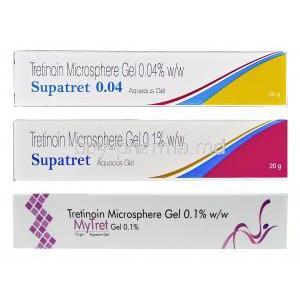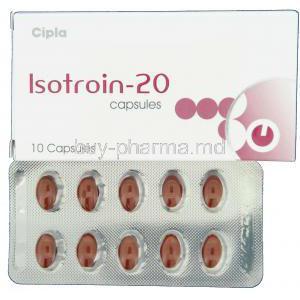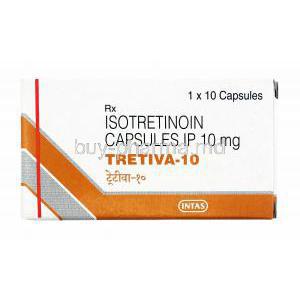1. Introduction to Demelan Cream
Demelan Cream is a topically applied skin-lightening and depigmenting agent formulated to address various forms of hyperpigmentation. It combines three potent active ingredients—glycolic acid, kojic acid, and arbutin—to target uneven skin tone and promote a brighter complexion.
Classified as a cosmeceutical, Demelan bridges the gap between pharmaceutical efficacy and cosmetic appeal. It is commonly available under the name “Demelan” in India and internationally distributed in dermatological clinics and online platforms under similar names.
Recommended for individuals with oily, combination, or normal skin types, it is widely prescribed for conditions such as melasma, age spots, acne-related pigmentation, and uneven skin tone caused by sun damage.
2. Composition and Active Ingredients
Glycolic Acid: A naturally derived alpha-hydroxy acid (AHA) from sugarcane, glycolic acid in Demelan is present at a moderate concentration that enables safe, controlled exfoliation. Its small molecular size allows it to penetrate the skin deeply, dissolving the bonds between dead skin cells for enhanced cellular turnover.
Kojic Acid: Originating from the fermentation of certain fungi, kojic acid works by inhibiting the activity of tyrosinase, an enzyme involved in melanin production. This leads to gradual skin lightening and reduction of hyperpigmented patches.
Arbutin: A glycosylated hydroquinone derivative extracted from bearberry, arbutin acts as a natural skin brightener. It slows down melanin formation and works synergistically with kojic acid to improve efficacy without increasing irritation.
Inactive components include emollients, stabilizers, and a non-comedogenic cream base designed to maintain hydration while supporting skin healing. Together, this combination therapy exerts a multi-targeted effect on pigment-producing pathways, enhancing overall skin clarity.
3. How Demelan Cream Works on Hyperpigmentation and Skin Tone Irregularities
- Glycolic Acid exfoliates the uppermost layer of the skin, facilitating the removal of pigmented cells and accelerating epidermal renewal.
- Kojic Acid and Arbutin inhibit melanin biosynthesis at the cellular level, directly targeting hyperactive melanocytes.
- The cream enhances cellular turnover, preventing the accumulation of excess melanin in the upper skin layers.
- Additionally, the ingredients have antioxidant and anti-inflammatory properties that soothe irritated skin and prevent post-inflammatory pigmentation.
4. Approved and Off-Label Uses of Demelan Cream
4.1 Dermatologically Approved Uses
- Melasma and Chloasma: Especially effective for hormonally induced facial pigmentation in women.
- Post-inflammatory Hyperpigmentation (PIH): Used after acne or skin trauma.
- Acne-related Pigmentation: Helps fade residual dark spots post-acne flare-ups.
- Age Spots and Freckles: Lightens photoaging-related discolorations caused by prolonged sun exposure.
4.2 Off-Label and Cosmetic Uses
- General Skin Brightening: Improves uneven tone and dull skin appearance.
- Dark Elbows, Knees, Underarms: Lightens areas prone to friction-induced hyperpigmentation.
- Acne Scar Fading: Reduces long-term post-acne discoloration.
- Pre-Procedural Use: Sometimes used before chemical peels or lasers to prime the skin and improve uniform results.
5. Dosage and Proper Administration of Demelan Cream
- Apply a small pea-sized amount once daily, preferably at night.
- Cleanse the face with a mild cleanser and pat dry before application.
- Use only on the affected areas unless advised otherwise.
- Follow with a broad-spectrum sunscreen during the day to prevent further pigmentation.
- Visible improvement is typically observed after 2 to 4 weeks of consistent use.
6. Common and Serious Side Effects of Demelan Cream
6.1 Frequently Reported Side Effects
- Transient redness, burning, or tingling upon initial application
- Flaking or dryness during the early phase of use
- Heightened skin sensitivity, especially to UV light
6.2 Potential Serious or Rare Adverse Effects
- Allergic contact dermatitis presenting as rash or itching
- Long-term use may result in skin thinning or prolonged erythema
- Improper use may lead to rebound hyperpigmentation or uneven tone
7. Important Warnings and Precautions Before Use
- Strict sun protection is essential during treatment to prevent re-pigmentation
- Avoid concurrent use with strong exfoliants, retinoids, or alcohol-based products
- Perform a patch test on a small area before first-time use
- Do not apply to wounded, broken, or inflamed skin
8. Drug and Product Interactions
- Exercise caution when using with retinoic acid or benzoyl peroxide due to risk of irritation
- Do not combine with other AHA or BHA products unless advised by a dermatologist
- Using incompatible sunscreens may reduce overall depigmenting effect
- Compatible with most moisturizers, calming serums, and barrier creams
9. Contraindications and When to Avoid Demelan Cream
- Do not use if allergic to any of the active components: glycolic acid, kojic acid, or arbutin
- Avoid use on active dermatitis, eczema, or ongoing infections
- Not intended for use on mucosal membranes, including lips and eyelids
- Patients with photosensitive disorders should avoid without physician guidance
10. Careful Administration and Monitoring Guidelines
Demelan Cream requires tailored application protocols, especially for individuals with reactive or compromised skin barriers. For those with sensitive skin types, initiating treatment with alternate-day application or mixing the cream with a mild moisturizer can help mitigate irritation. Over time, the concentration and frequency may be increased based on tolerance.
In cases of severe or resistant hyperpigmentation, a dermatologist-guided regimen is essential. This may include adjunctive therapies such as oral antioxidants, in-office peels, or prescription-strength compounds for synergistic results.
The importance of a gradual introduction into the skincare routine cannot be overstated. Abrupt integration of actives like glycolic acid and kojic acid can disrupt the stratum corneum, leading to inflammation or rebound hyperpigmentation. Start with every third night and increase usage based on skin adaptation.
Continuous monitoring for adverse signs such as epidermal thinning, increased redness, or paradoxical darkening is crucial. Early detection of these effects allows timely adjustment or discontinuation of the product to prevent long-term skin damage.
11. Administration in Special Populations
11.1 Use in Elderly Patients
The skin of elderly individuals tends to be thinner, less elastic, and more vulnerable to irritants. As such, increased absorption risk and delayed recovery from irritation are prominent concerns. A conservative approach involving reduced frequency—perhaps two to three times weekly—is often advised. Close monitoring for bruising, peeling, or extreme dryness is also recommended.
11.2 Use in Pregnant and Breastfeeding Women
Topical glycolic acid, kojic acid, and arbutin have limited systemic absorption, but robust safety data during pregnancy are lacking. Therefore, usage should be reserved for situations where the benefits clearly outweigh the risks. Application on small, localized areas is preferable, and usage near the breast area during lactation should be strictly avoided to prevent infant exposure.
Consultation with a healthcare provider is essential to weigh the risk-benefit profile, especially during the first trimester when fetal development is most critical.
11.3 Use in Pediatric Populations
Demelan Cream is not recommended for children under 12 years of age. The risk of skin barrier disruption and chemical sensitivity is heightened in younger individuals. Furthermore, unsupervised or inappropriate use can lead to misapplication and worsened pigmentation. Pediatric usage should only occur under the strict supervision of a dermatologist.
12. Overdose and Misuse Consequences
Topical overdose of Demelan Cream may manifest as chemical burns, persistent erythema, and intense stinging. Signs of overuse often include crusting, peeling beyond normal exfoliation, or development of blisters. Prolonged misuse may compromise the skin’s protective barrier, resulting in chronic sensitivity and increased susceptibility to environmental damage.
- First-aid measures: Immediately rinse the affected area with cool water and discontinue use. Apply a bland emollient or healing ointment to soothe irritation.
- Seek medical attention: In cases of severe burns, infection, or prolonged inflammation, dermatological evaluation is essential.
- Preventative steps: Avoid layering with other actives and ensure accurate dosing per application. Follow the prescribed regimen without alteration.
13. Storage Instructions and Product Stability
Store Demelan Cream in a cool, dry place between 15°C and 25°C, away from direct sunlight and humidity. Exposure to extreme temperatures can degrade active ingredients, compromising both safety and efficacy.
Pay close attention to the expiry date printed on the packaging. Changes in color, texture, or odor may indicate that the product has deteriorated and should no longer be used.
For safe disposal, do not flush the cream down the drain. Instead, wrap in paper and discard according to local pharmaceutical waste guidelines to prevent environmental contamination.
14. Handling and Usage Precautions
- Practice strict hygiene by washing hands before and after application. Use a clean spatula or cotton swab to minimize contamination.
- Avoid cross-contamination by not sharing the cream with others and ensuring the cap is tightly closed after each use.
- Keep out of reach of children and pets to prevent accidental ingestion or misuse.
- Always use a broad-spectrum sunscreen during the day, as ingredients like glycolic acid and kojic acid increase photosensitivity. Incorporating skin barrier-supporting products, such as ceramide-rich moisturizers, can further protect against irritation.
Demelan Cream, Glycolic Acid/ Kojic Acid/ Arbutin Cream FAQ
- What is Demelan cream used for?
- Can we use Demelan cream every day?
- Is Demelan glycolic acid arbutin kojic acid cream?
- How long does Demelan take to work?
- Can we use vitamin C with Demelan Cream?
- How to use Demelan cream at night?
- Can we use Demelan cream without a doctor's consultation?
- How effective is Demelan?
- What are the side effects of Demelan?
- Can Demelan Cream be used for skin lightening?
- How long should I use Demelan?
- Can Demelan cream be used on full face?
- Does Demelan cream remove pimples?
- What is glycolic acid arbutin kojic acid dipalmitate used for?
- Can glycolic acid and arbutin be used together?
- Can I use kojic acid and glycolic acid together?
- Can I use glycolic acid every day?
- What does glycolic acid do to skin?
- Does glycolic acid lighten your skin?
- Is glycolic acid good for underarms?
- What are the disadvantages of using glycolic acid?
- Does glycolic acid remove dark spots?
- What to avoid with glycolic acid?
- Does glycolic acid remove pimples?
- Which is better, glycolic acid or salicylic acid?
- How to know if glycolic acid is working?
- Which acid is best for pimples?
- What does kojic acid do for your skin?
- What are the disadvantages of kojic acid?
- Can you use kojic acid everyday?
- Can kojic remove dark spots?
- What not to mix with kojic acid?
- Does kojic fade scars?
- What does arbutin do to the skin?
- Is arbutin a bleaching cream?
- Is alpha arbutin good for your face?
- Is arbutin better than vitamin C?
- What are the side effects of alpha arbutin?
- Is alpha arbutin cancerous for skin?
- What is Demelan cream used for?
- Can we use Demelan cream every day?
- Is Demelan glycolic acid arbutin kojic acid cream?
- How effective is Demelan?
- Can Demelan Cream be used for skin lightening?
- What is glycolic acid arbutin kojic acid dipalmitate used for?
- Can glycolic acid and arbutin be used together?
- Can I use kojic acid and glycolic acid together?
- Can I use glycolic acid every day?
- Does glycolic acid remove dark spots?
- What to avoid with glycolic acid?
- Does glycolic acid remove pimples?
- Which is better, glycolic acid or salicylic acid?
- How to know if glycolic acid is working?
- Is arbutin a bleaching cream?
- Is alpha arbutin good for your face?
- Is arbutin better than vitamin C?
- Is alpha arbutin good for your face?
- Is arbutin better than vitamin C?
What is Demelan cream used for?
Demelan cream is a skincare solution designed for addressing skin pigmentation concerns, such as hyperpigmentation and dark spots, while also aiming to improve the evenness of the skin tone through a blend of glycolic acid, alongside arbutin and kojic acid working synergistically to reduce skin discoloration and enhance skin uniformity.
Can we use Demelan cream every day?
Apply a layer of Demelan cream to the affected areas every night before bed.
Is Demelan glycolic acid arbutin kojic acid cream?
Demelan Cream is a treatment for reducing pigmentation that combines the effects of three key ingredients: Alpha arbutin, Kojic acid, and Glycolic acid.
How long does Demelan take to work?
A few days to weeks
Can we use vitamin C with Demelan Cream?
Yes
How to use Demelan cream at night?
Make sure to wash your face and gently dry it before putting on the cream. Apply a coat to the spots every night and gently massage until it's fully absorbed. Don't forget to use sunscreen in the daytime to stop pigmentation from happening. Consult a skin specialist to know how long you should be using it for.
Can we use Demelan cream without a doctor's consultation?
Yes
How effective is Demelan?
Regularly using this product aids in renewing your skin by exfoliating away skin cells that can lead to a smoother and more balanced skin tone. It can help enhance the texture of your skin and boost its radiance over time.
What are the side effects of Demelan?
Dry skin can lead to irritation, itchiness, or a frequent burning sensation.
Can Demelan Cream be used for skin lightening?
The medication functions as a skin brightening treatment used for conditions like hyperpigmentation and melasma, addressing skin discoloration issues effectively.
How long should I use Demelan?
8 weeks
Can Demelan cream be used on full face?
Yes
Does Demelan cream remove pimples?
Yes
What is glycolic acid arbutin kojic acid dipalmitate used for?
Glycolic Acid helps eliminate cells and unveils a radiant layer beneath. Arbutin collaborates with Kojic Acid Dipalmitate to hinder melanin generation and diminish spots, for a skin tone effect that leaves your skin looking smoother and glowing with radiance!
Can glycolic acid and arbutin be used together?
Yes
Can I use kojic acid and glycolic acid together?
Yes
Can I use glycolic acid every day?
Yes
What does glycolic acid do to skin?
Many have recognized glycolic acid as an element in skincare due to its ability to exfoliate and hydrate the skin while also combating signs of aging. This compound functions by breaking down the connections holding skin cells together chemically; this process encourages the shedding of these cells. Uncovering a more radiant and revitalized layer of skin beneath them.
Does glycolic acid lighten your skin?
Yes
Is glycolic acid good for underarms?
Using glycolic acid on your underarms can be helpful; however, it is important to approach it with care because the skin in that area is sensitive.
What are the disadvantages of using glycolic acid?
Increased sensitivity to sunlight can result in a susceptibility to sunburn and the potential for lasting harm from sun exposure.
Does glycolic acid remove dark spots?
Yes
What to avoid with glycolic acid?
Vitamin C and Niacinamide
Does glycolic acid remove pimples?
Glycolic acid's properties make it a valuable component for treating acne spots.
Which is better, glycolic acid or salicylic acid?
Generally speaking, to cater to dryness as well as normal and combination skin types, effectively addressing issues such as fine lines and wrinkles, along with uneven skin tone, glycolic acid, which belongs to the category of AHAs or alpha hydroxy acids, is effective. On the other hand, salicylic acid, from the BHA or beta hydroxy acids group, is usually suggested for acne-prone skin since it can infiltrate pores and eliminate surplus oil and debris effortlessly..
How to know if glycolic acid is working?
You might notice that glycolic acid is effective when your skin feels smoother in texture, and you experience breakouts while also achieving a uniform skin tone.
Which acid is best for pimples?
Using glycolic acid peels may assist in removing skin cells from the layer of your skin.
What does kojic acid do for your skin?
Kojic acid is recognized for its ability to improve skin tone by blocking the activity of tyrosinase, an enzyme involved in melanin synthesis.
What are the disadvantages of kojic acid?
Kojic acid's primary side effect is contact dermatitis, which is more common in people with skin; the symptoms of this condition may include irritation and discomfort, such as rash and itching.
Can you use kojic acid everyday?
Yes
Can kojic remove dark spots?
Yes
What not to mix with kojic acid?
VItamin C
Does kojic fade scars?
Yes
What does arbutin do to the skin?
Alpha arbutin works by blocking the activity of the enzyme tyrosinase, which is involved in producing melanin in the skin. This action aids in diminishing hyperpigmentation concerns such as melasma and age spots, resulting in a radiant and evenly toned complexion.
Is arbutin a bleaching cream?
No
Is alpha arbutin good for your face?
Alpha arbutin serves as an efficient skin brightening component, serving as a substitute for hydroquinone in cases due to its anti-inflammatory qualities and capacity to hinder melanin production in the epidermis, presenting a compelling choice for individuals seeking an alternative exfoliant option.
Is arbutin better than vitamin C?
Alpha arbutin might work better as a skin brightening ingredient.
What are the side effects of alpha arbutin?
Skin irritation might lead to acne, increased sensitivity to the sun or sunburn, as well as redness or irritation due to an allergic reaction.
Is alpha arbutin cancerous for skin?
Yes
What is Demelan cream used for?
Demelan cream is a skin treatment applied topically to address concerns regarding skin pigmentation, such as hyperpigmentation and dark spots, while also improving skin tone by incorporating glycolic acid, along with arbutin and kojic acid to help diminish skin discoloration and enhance complexion balance.
Can we use Demelan cream every day?
Apply an amount of Demelan cream to the areas that are affected before bed each night.
Is Demelan glycolic acid arbutin kojic acid cream?
Demelan Cream is a treatment for reducing pigmentation that combines the advantages of three key active components: Alpha arbutin, Kojic acid, and Glycolic acid.
How effective is Demelan?
It aids in revitalizing the skin by eliminating skin cells that could lead to a softer and more uniform skin tone. The consistent application can help refine skin quality and boost its glow.
Can Demelan Cream be used for skin lightening?
The medication functions as a lightening solution utilized in treating conditions of skin discoloration, like hyperpigmentation and melasma.
What is glycolic acid arbutin kojic acid dipalmitate used for?
The use of Glycolic Acid helps to exfoliate the skin's layer by getting rid of cells and uncover a more radiant skin underneath it all. Taking advantage of the effort, the combination of Arbutin and Kojic Acid Dipalmitate has the effect of decreasing melanin production, which in turn lessens dark spots and evens out the skin tone beautifully. These two elements working hand in hand lead to a more glowing complexion that's sure to impress.
Can glycolic acid and arbutin be used together?
Yes
Can I use kojic acid and glycolic acid together?
Yes
Can I use glycolic acid every day?
Yes
Does glycolic acid remove dark spots?
Glycolic acid is known to assist in reducing the visibility of dark spots and enhancing the look of hyperpigmentation on the skin.
What to avoid with glycolic acid?
Vitamin C and Niacinamide
Does glycolic acid remove pimples?
Glycolic acid's potent penetration power makes it a valuable ingredient for targeting acne spots.
Which is better, glycolic acid or salicylic acid?
For dry to combination skin types or for concerns such as lines and uneven skin tone, glycolic acid – an AHA – is considered more suitable. On the other hand, salicylic acid – a BHA – is often suggested for acne-prone skin due to its effectiveness in penetrating pores and eliminating excess oil and debris.
How to know if glycolic acid is working?
The indications that glycolic acid consists of a refined skin texture, with reduced breakouts and a balanced skin tone.
Is arbutin a bleaching cream?
No
Is alpha arbutin good for your face?
Alpha arbutin serves as an efficient skin brightening component offering an alternative to hydroquinone due to its inflammatory traits and capacity to reduce melanin production in the skin's outer layer, making it a great choice for individuals seeking an exfoliation substitute.
Is arbutin better than vitamin C?
Alpha arbutin could possibly work better as a brightening ingredient.
Is alpha arbutin good for your face?
Alpha arbutin is considered an efficient ingredient for brightening the skin, often used as a substitute for hydroquinone due to its anti-inflammatory properties and ability to reduce melanin production in the outer layer of the skin, making it a great choice for individuals seeking an exfoliation alternative.
Is arbutin better than vitamin C?
Alpha arbutin might prove to be a choice for brightening the skin.

